I know what you are thinking – not another blog – but that’s what you get for joining such an active beekeeping branch!
This was our first apiary visit of 2023 and appropriately, it was in Shipston-on-Stour.
The visit was arranged and co-ordinated by Julia and Paul Neal. They live in Shipston and Paul recently took over looking after the Shipston out-apiary in the garden of St. Edmund’s Church. Our Chair, Ray Pearce, had invited retired Seasonal Bee Inspector Gordon Bull to come along and give us the benefit of his knowledge and experience.
The plan for the afternoon was to start at the colony at St. Edmund’s Church and then walk back down the road to see the colonies in Julia and Paul’s garden. Followed by tea and cakes, of course.
St Edmund’s Out-apiary
We regard this as an out-apiary of the Training Apiary in Brailes. The Church has turned the graveyard at the back of the church into a wilderness garden for anyone to enjoy.
We met at the back of the church, got into our bee suits, and headed off to the colony….

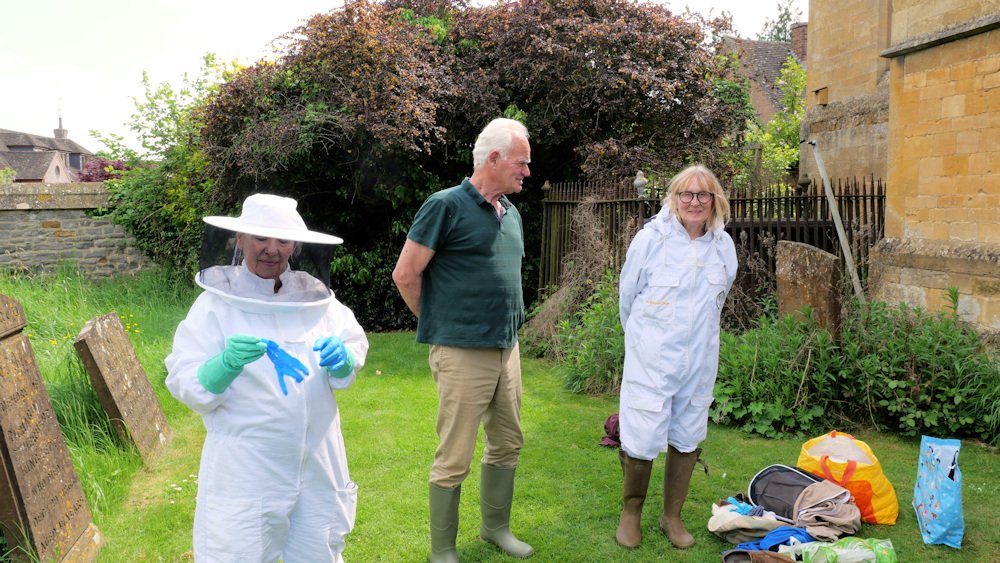
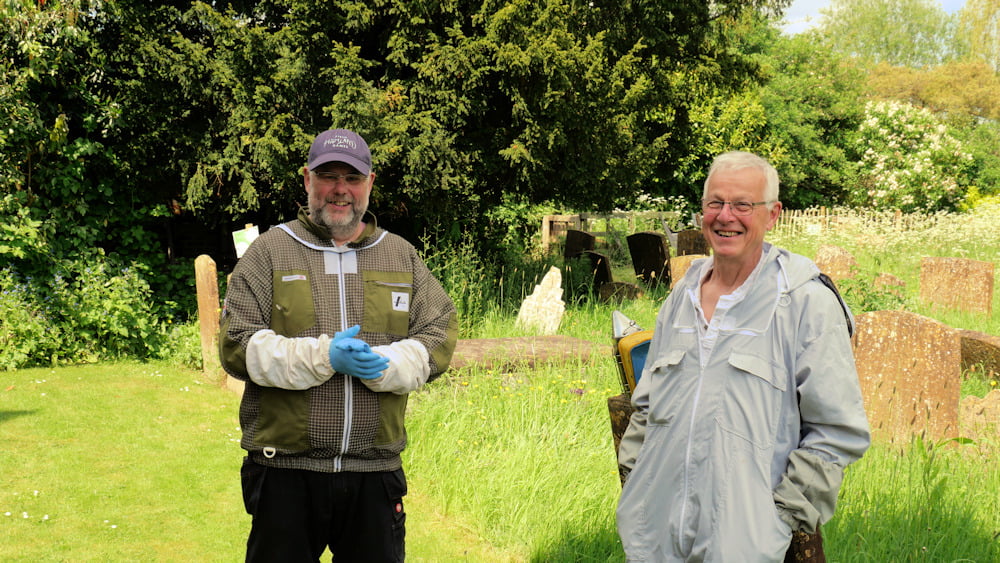
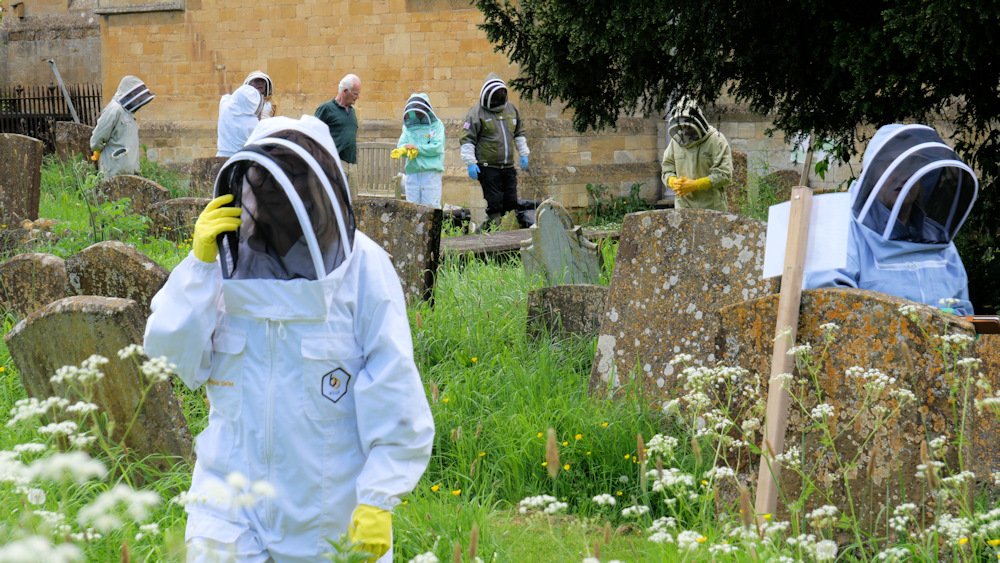

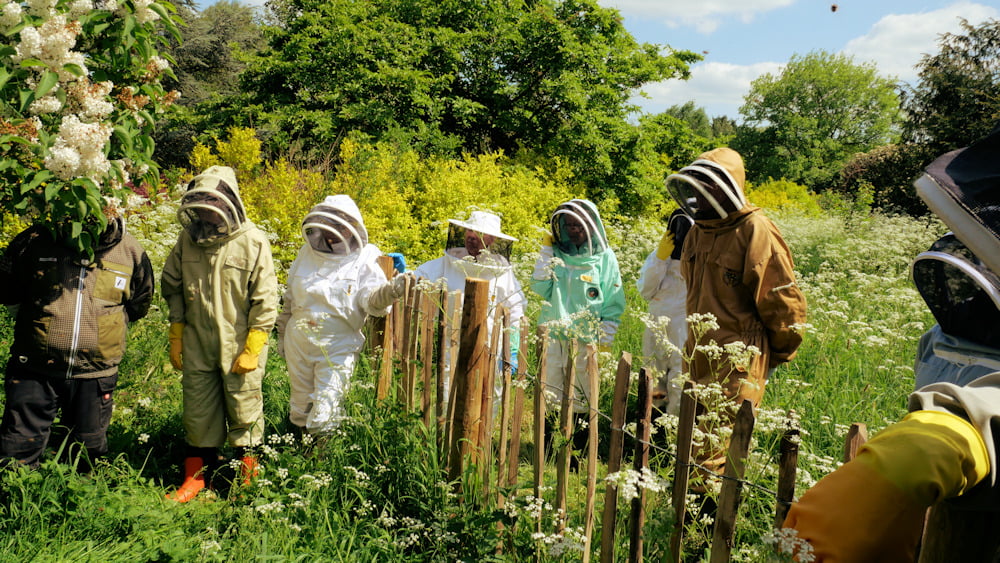
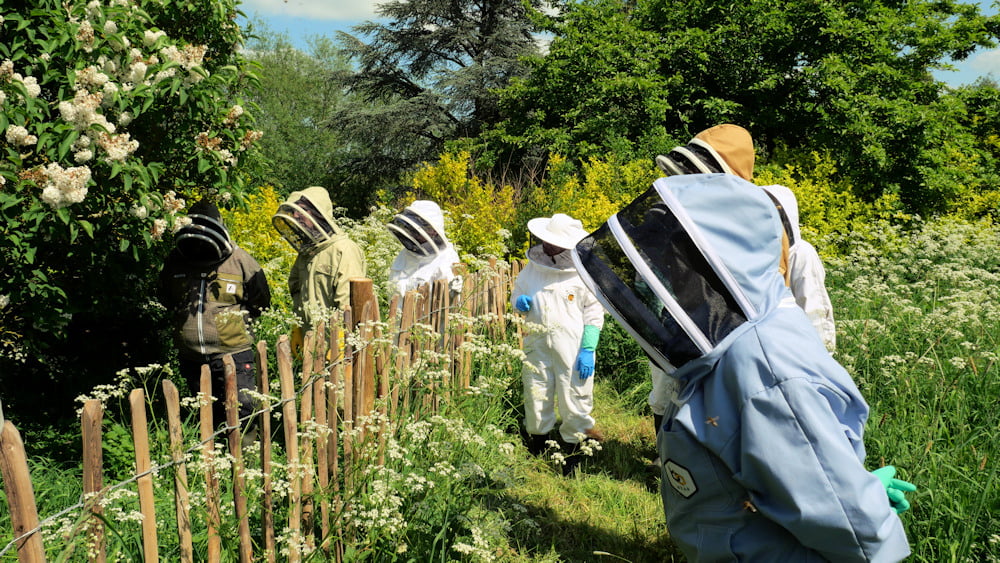
As soon as he looked at the entrance, where there was a lot of drones ‘loitering’, Gordon said he thought we were going to find something interesting inside. And he was not wrong. The bees were, ahem, very lively and sealed queen cells were found on the second frame – and most subsequent frames. Given the sealed queen cells but so many bees we eventually decided that the colony must have swarmed but the queen was probably clipped, fell to the ground, and the bees returned to the hive. As this would have been several days ago there was no chance now of finding the queen. Several queen cells looked as if they were ready to emerge so Gordon opened several and it was a first for many of us to see a queen emerge from a queen cell and head off across the comb.
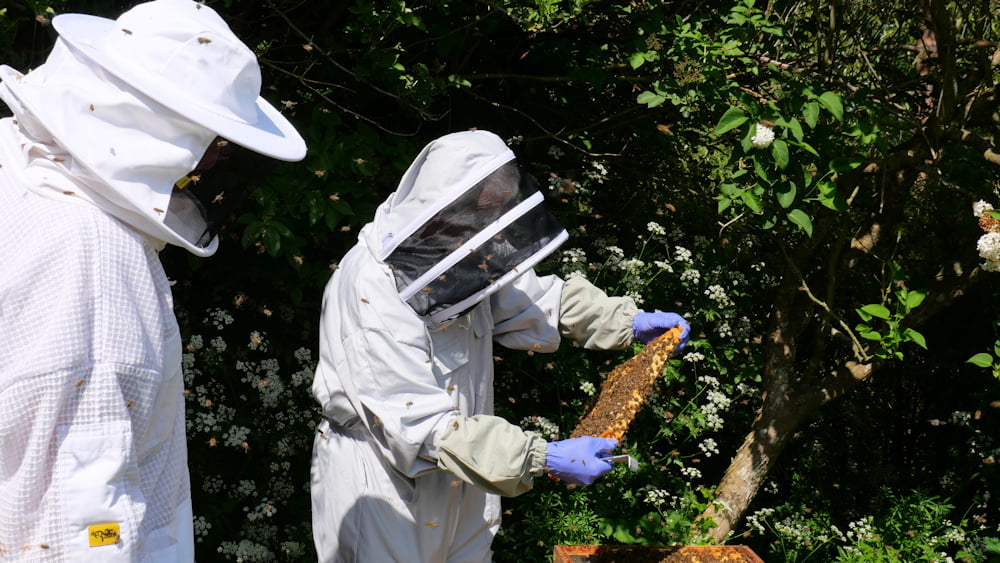
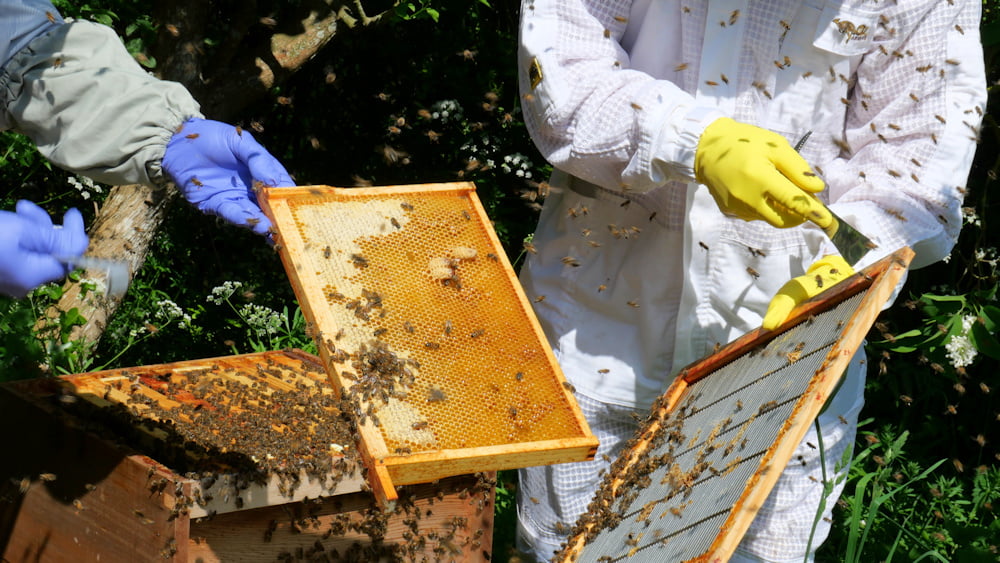
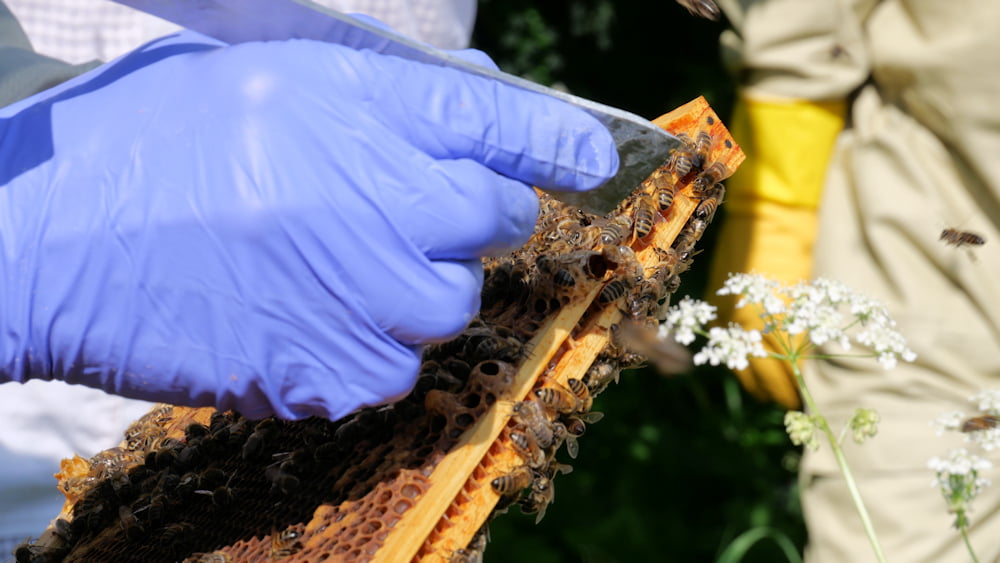
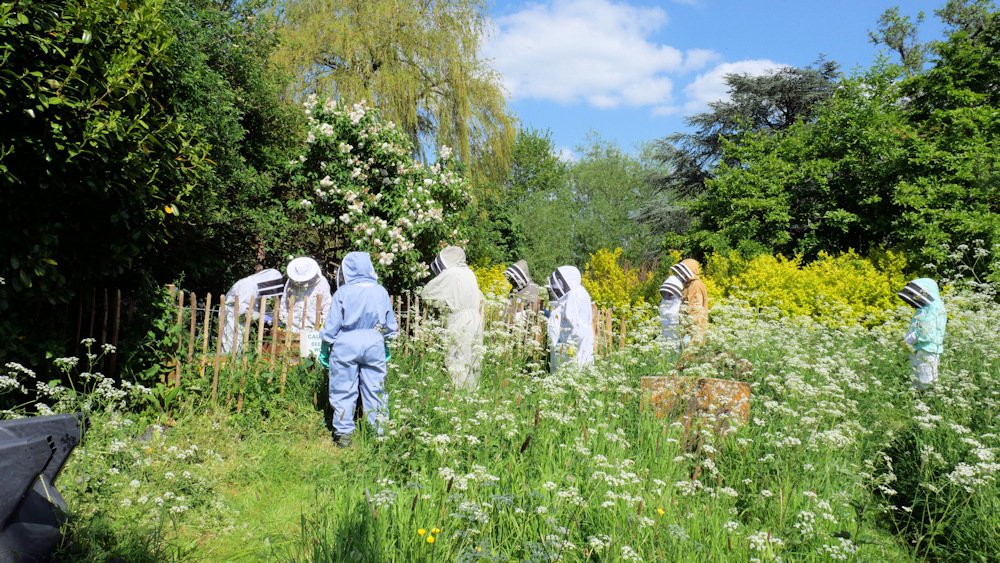

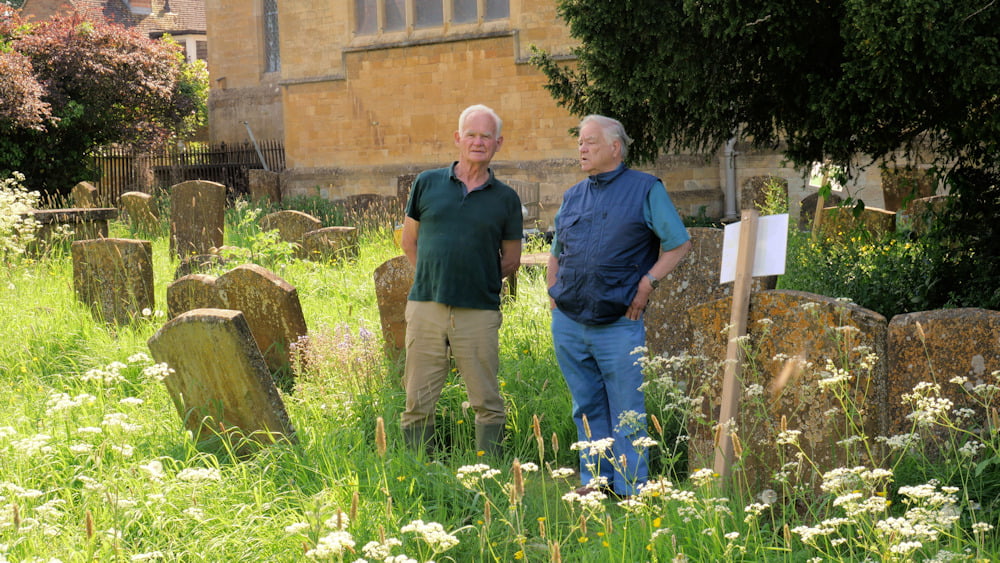
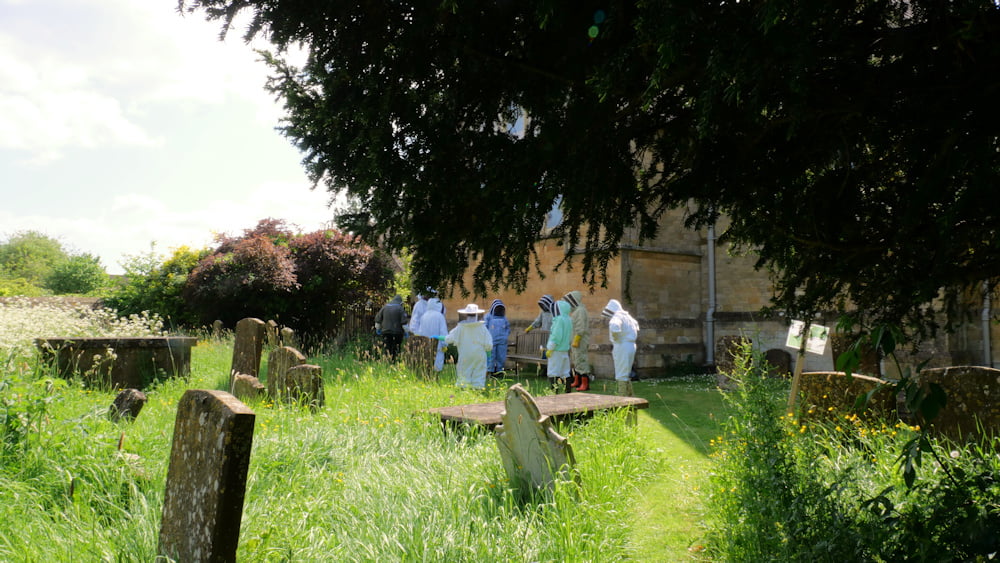
Paul and Julia Neal’s Apiary
After the excitement of the St. Edmund’s bees we were hoping for something a little calmer – and they did not disappoint. The colony Paul and Gordon chose to open was so calm it was unbelievable. As before Gordon went through the colony telling us what he was seeing and we were able to pass frames around so that members could see the features Gordon was pointing out such as eggs and lavae.
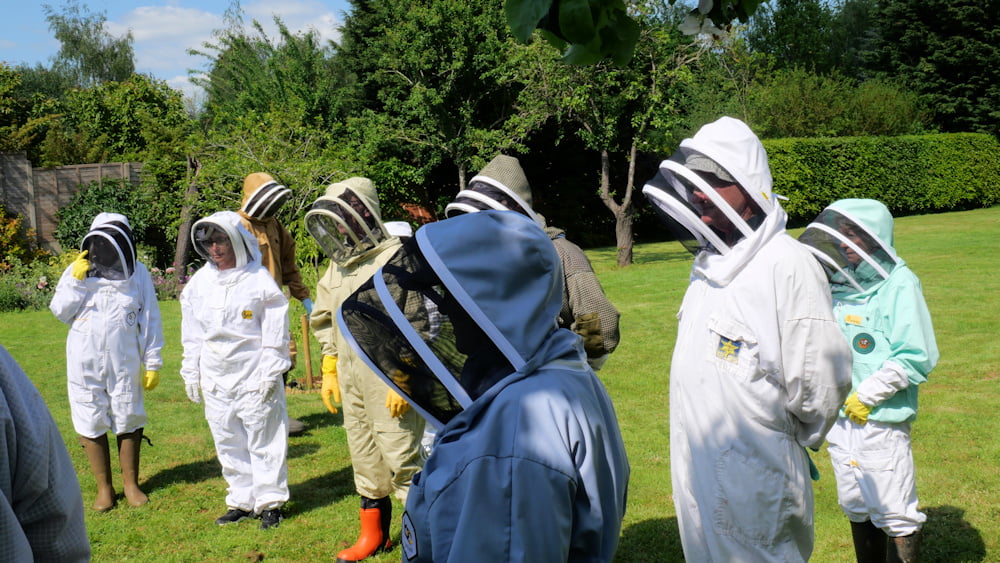
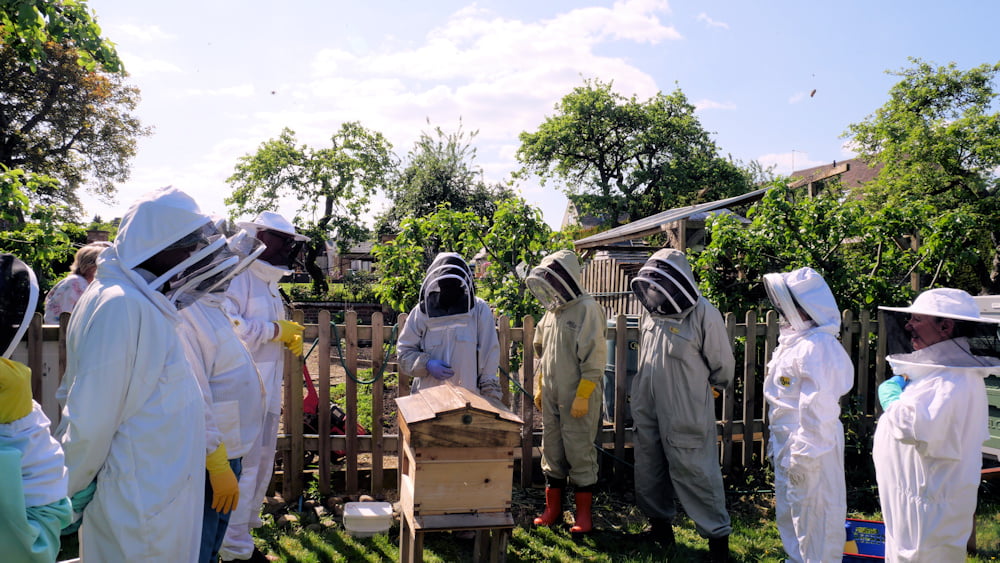

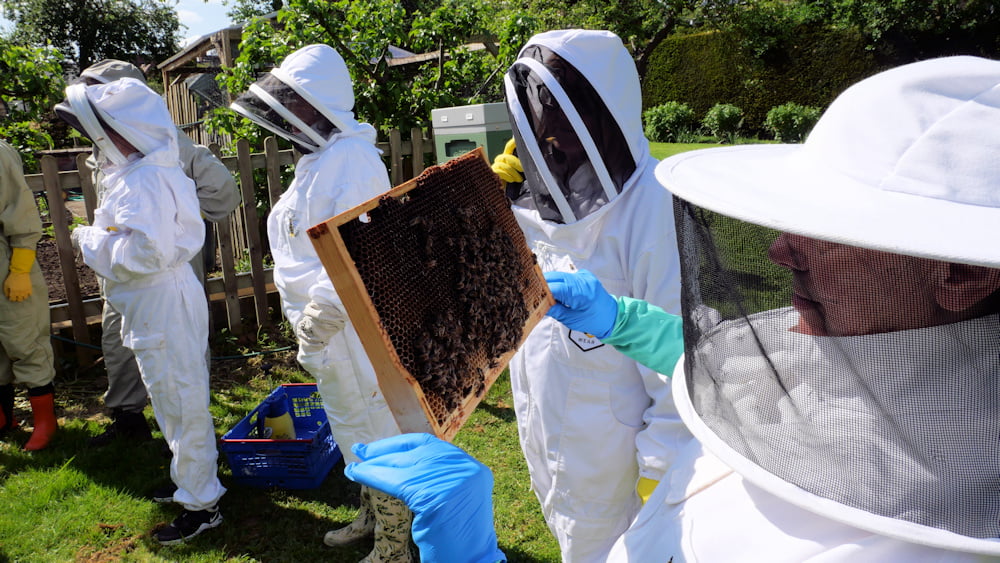
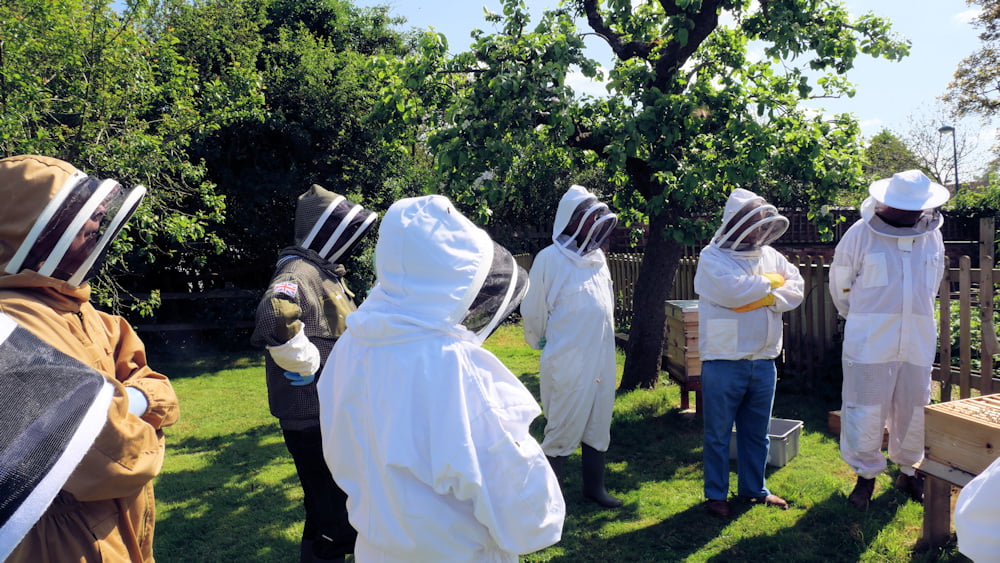
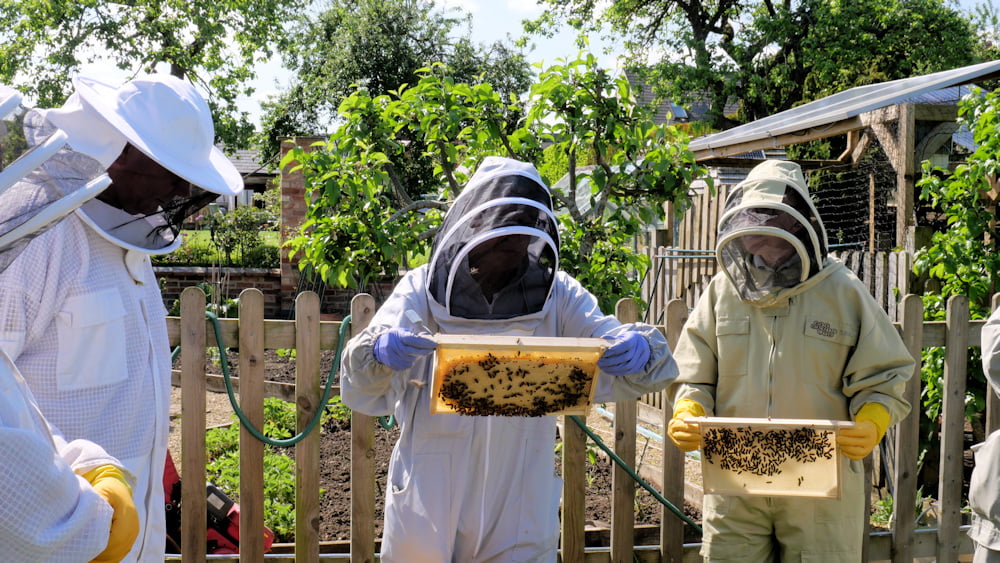
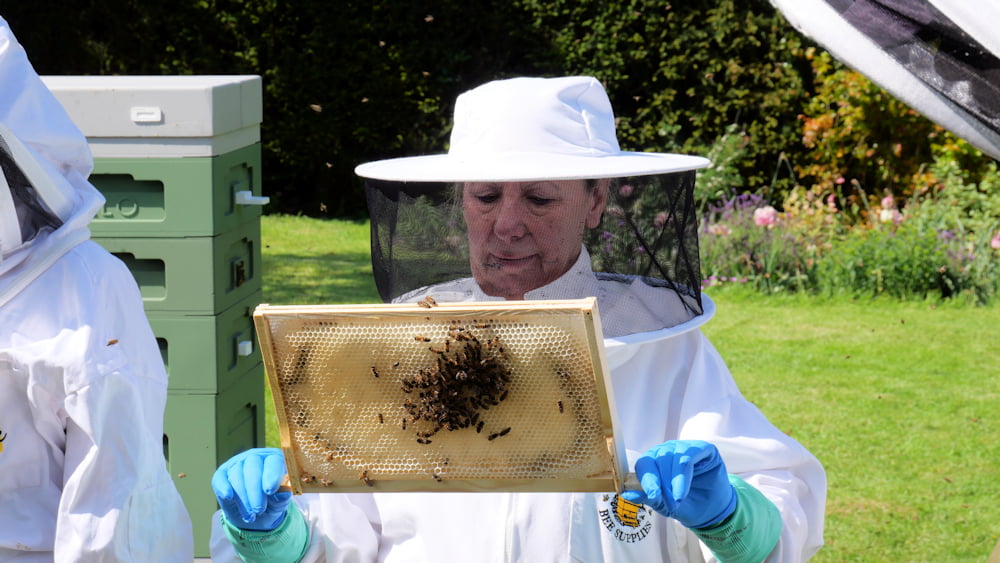

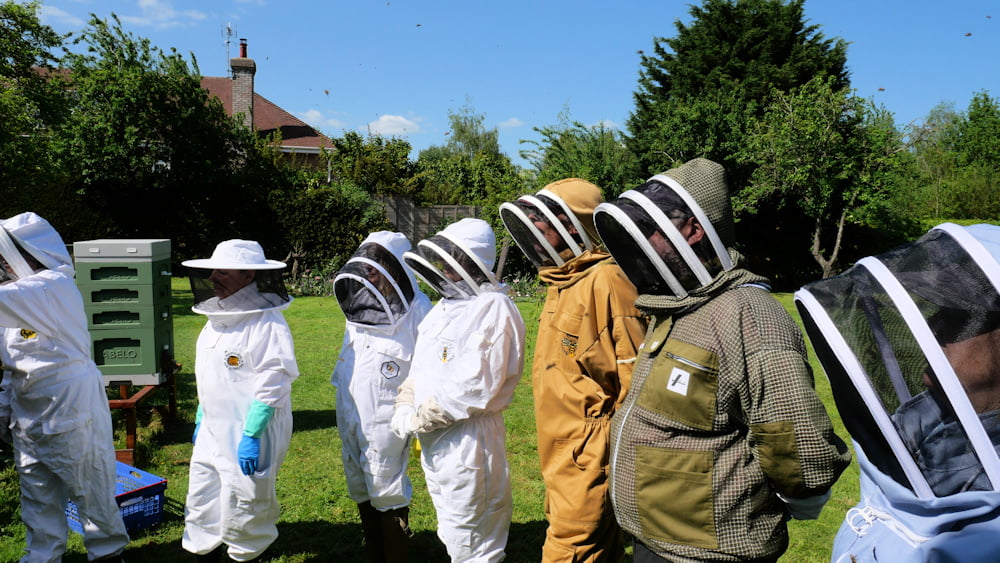
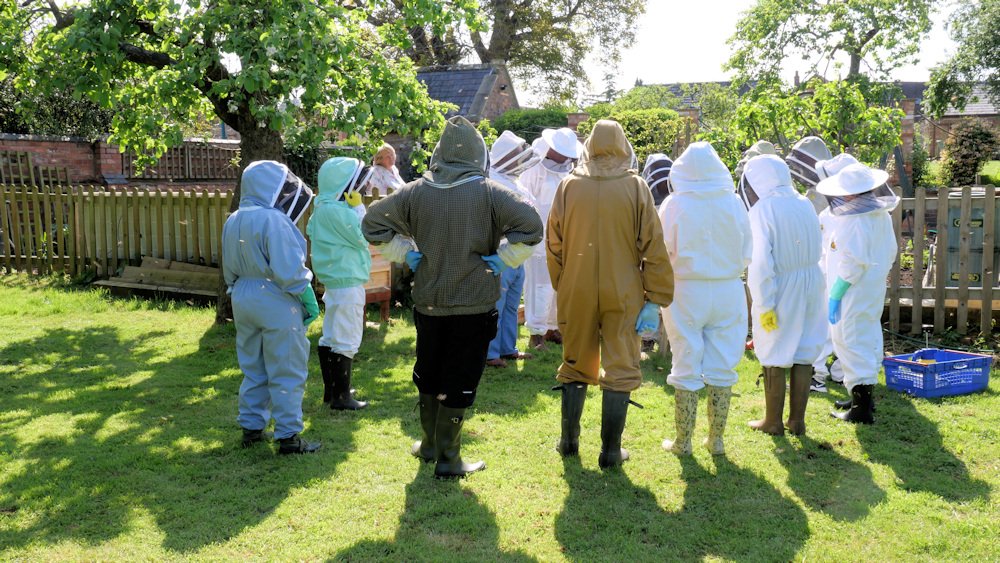
Once the colony was closed up it was time, of course, for tea and cake, and Julia had provided plenty.
And as a final flourish at the end of the day Paul arranged for one of his colonies to swarm around their courtyard and settle on a tree at a convenient height to be collected and give Paul his 9th? colony.
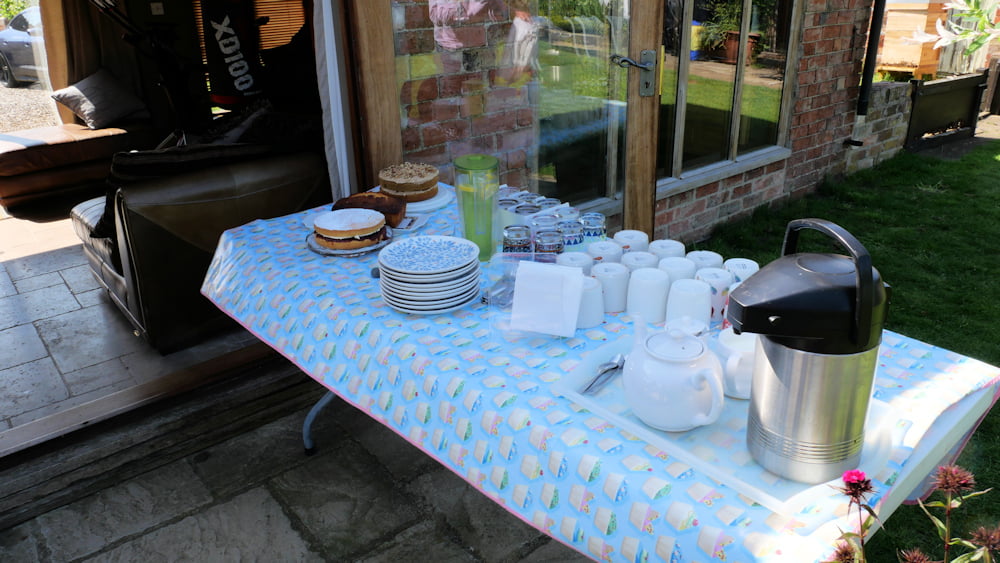
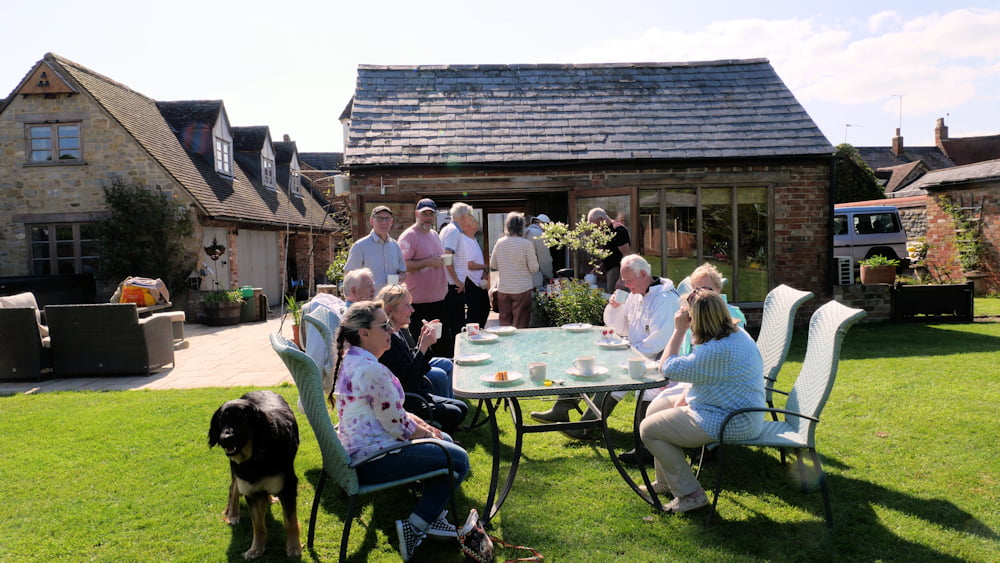
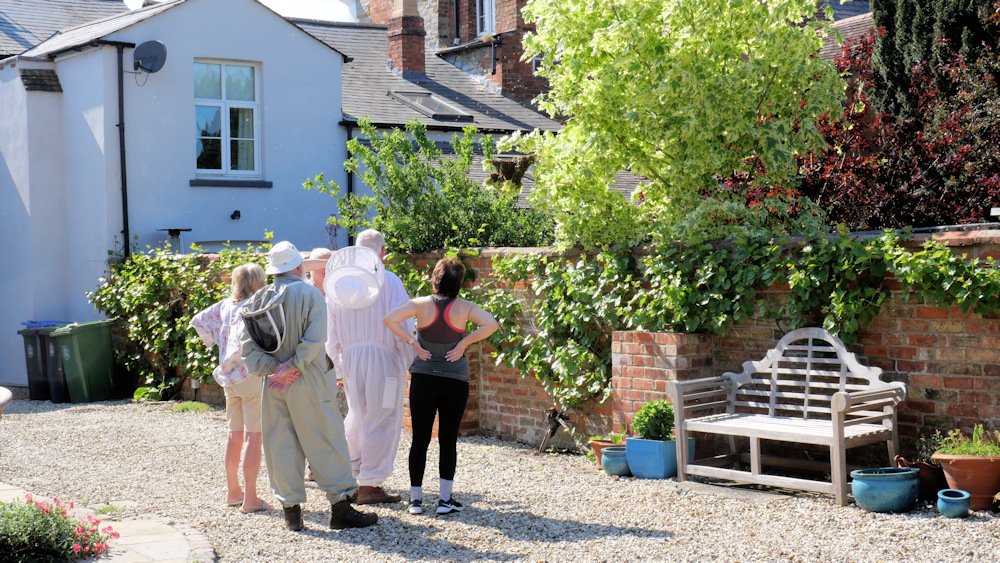
Ray Pearce, Chair, Shipston Beekeepers, gave Gordon and Julia (and Paul) a bottle of Prosecco as a token of our thanks for an excellent afternoon.
Why apiary visits?
We had a number of new beekeepers on this apiary visit. In the space of a couple of hours they got to see what a very busy (ahem) colony looks like, queen cells, several queens being released, and then a very calm colony where no smoke was needed to inspect, BIAS, and wax moth, all explained by an expert.
This is why apiary visits can be so useful and informative in that you get to experience a range of bee keeping situations that you might not otherwise encounter, especially if you have only one or two colonies of your own.
Our next Apiary visit is on Sat 17th June to the apiary of David and Margery Blower in Brailes put it in your diary now!